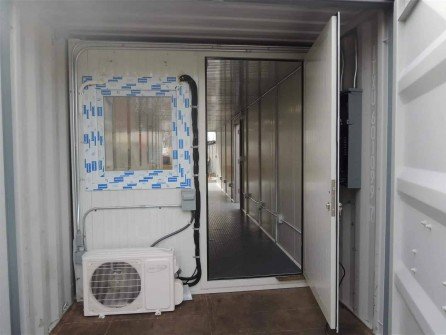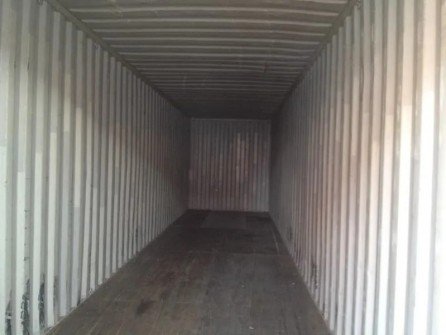Shipping containers are extremely strong buildings, as you can imagine. They can withstand heavy wear and tear because they are made to withstand lengthy trips by truck, train, and boat.
Corten steel, an alloy with high strength, rust resistance, and water resistance, is commonly used in the construction of shipping containers because it is meant to survive the challenging conditions encountered during ocean transportation.
An effective and waterproof structure is created by welding corrugated steel panels together to form the walls, roof, and floor of a shipping container. They might also contain additional materials like coatings or treatments to prevent corrosion on the steel, plywood, or other kinds of wood for the flooring. Not every kind of container is like this.
For example, dry van containers are not insulated.
Naturally, a wind and waterproof guarantee is included with every shipping container as standard. Every standard shipping container has tiny vents that are about 1-inch square. They are not completely airtight, but they do not permit much air to pass through.
Are Shipping Containers Considered Airtight?
You may assume that shipping containers are airtight considering their capacity to carry goods across the globe undamaged. But the majority of containers aren’t instead, as we mentioned before, they feature 1-inch-square vents one on each side below the top rail. The reason for this is to prevent the moisture problem.
Any moisture that builds up inside a shipping container while it is being transported or stored is referred to as "shipping container condensation". When the temperature inside a shipping container drops below the dew point of the air inside, condensation forms on the container walls. By tiny air vents, condensation is prevented, and some air can flow inside the containers.
Contrarily, containers used for refrigeration are airtight. Reefer containers always have a metal floor, and they don't have air vents because this makes it possible to regulate the temperature of the container more precisely.
What are the Reasons behind Condensation in a Shipping Container?
Condensation inside shipping containers happens when the air inside the container cools down below the dew point. Internal temperatures can vary greatly due to weather variations and other external factors, as shipping containers are made of metal.
At the dew point, which is reached when the container cools considerably, the air can no longer hold its moisture. Following this, the moisture turns from vapor to liquid and builds up on the roof and walls. Significant losses of goods such as paper products and textiles may occur from this condensation dripping everywhere.
Temperature, air space, and ventilation can all affect how much condensation forms inside a shipping container.
Around the doors, vents, and other areas of the container, there might be tiny cracks or openings that let air in or out.
Furthermore, some containers might not be as airtight as they once were due to damage or modifications. Air can readily enter or exit a container, for instance, if it has a hole or rusted area.
What is the Best Way to Control Condensation?
An air circulation system that helps prevent condensation is provided by the one-inch square vents that are on each side below the top rail of most containers. When it's colder outside than inside a container, container rain known as condensation builds up on the interior.
The items being stored may become damaged by the water or the mold that grows as a result of this moisture buildup inside the container.
Vents on opposing sides of the container facilitate airflow in and out of the structure, thereby averting the most severe consequences of condensation. It is necessary to properly ventilate and insulate a container before converting it into a living area or even an outdoor office.
A container can be made into a functional office or home space by adding windows, extraction and ventilation fans, and the right insulation to enable heating to efficiently warm the interior.
You can maintain the weatherproofness of your container by cleaning it frequently, keeping an eye out for rust patches, and inspecting the door seals and hinges.
You May Wonder
Do shipping containers have air holes?
Like any other structures or objects used for storage, shipping containers need to have a constant flow of air coming in and going out to keep the goods inside fresh. Typically, there are two ventilation holes in shipping containers. They are on each side below the top rail.
How long can you breathe in a shipping container?
The space's limiting element would be water or CO2. According to their probable capacities, we can assume that each cubic foot provides approximately 5.5 minutes for each individual.















